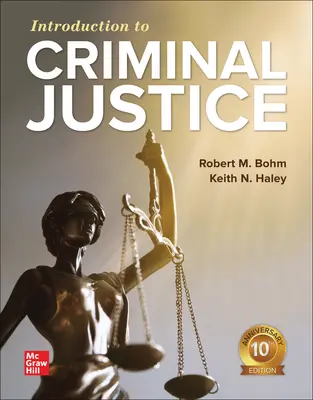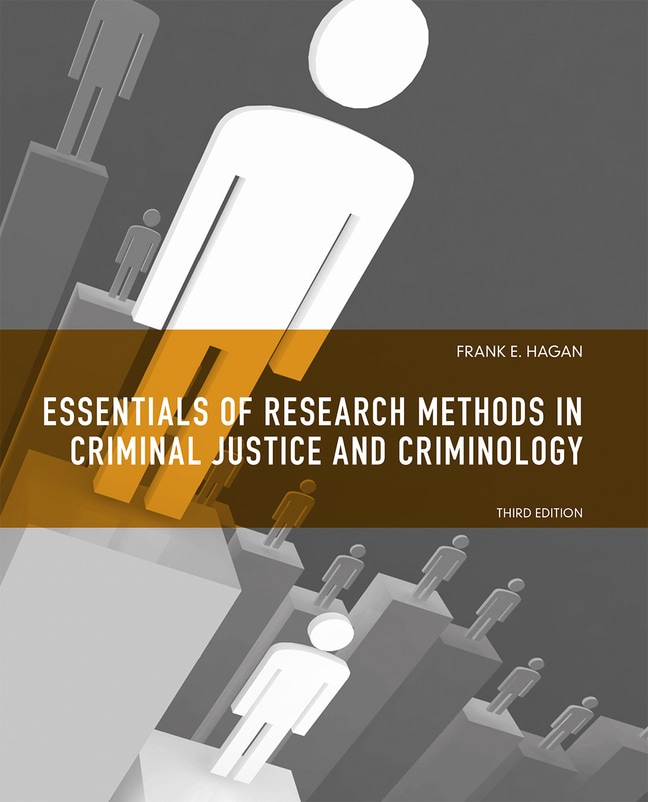Imagine, if you will, a bustling city street teeming with life. Amidst the constant flow of people, a crime occurs, leaving behind a trail of uncertainty and fear. The wheels of justice begin to turn, but how do we make sense of it all? What are the principles that guide our approach to crime and punishment? The answer lies within the theoretical foundations of criminal justice, a fascinating and complex field that shapes our understanding of crime, accountability, and the pursuit of a just society.

Image: www.mheducation.com
This exploration delves into the rich tapestry of theories that underpin criminal justice, unpacking their historical context, core principles, and real-world implications. This journey promises to not only broaden your understanding of this intricate system but also provide a lens through which to critically examine the justice system’s effectiveness.
The Pillars of Criminal Justice Theory: A Historical Perspective
Understanding the origins of criminal justice theories is essential for grasping their nuances and impact. Ancient philosophers, from Plato to Aristotle, grappled with concepts of justice, punishment, and the role of the state in maintaining order. These early thinkers set the stage for future generations to refine and expand upon their ideas.
The 18th century witnessed the emergence of the Classical School of Criminology, led by Cesare Beccaria and Jeremy Bentham. This influential school emphasized the importance of free will, rational choice, and deterrence in preventing crime. They argued that punishment should be swift, certain, and proportionate to the crime, ensuring that the cost of crime outweighed any potential benefits.
The 19th century saw the rise of the Positivist School, which challenged the Classical School’s focus on free will. Positivists, such as Cesare Lombroso, believed that criminal behavior was influenced by biological, psychological, and social factors. They sought to identify criminal types based on physical traits and societal influences, placing greater emphasis on rehabilitation and social reform.
Exploring the Major Theories and their Implications
Criminal justice theories offer various explanations for crime and recommend specific approaches to addressing it. Some of the most prominent theories include:
1. Strain Theory: Developed by Robert Merton, this theory argues that social pressures and inequalities create a strain on individuals, pushing them towards deviance and criminal activity. This strain often arises from a disconnect between culturally defined goals (like wealth and success) and the legitimate means to achieve them. Individuals may resort to crime as a way to attain desired goals or simply cope with the frustrations of their circumstances.
2. Social Control Theory: This theory, pioneered by Travis Hirschi, posits that individuals are held in check by social bonds and attachments. These bonds, including strong family ties, social involvement, and a sense of commitment to conventional values, act as a deterrent against criminal behavior. When these bonds weaken, individuals are more likely to engage in deviant acts.
3. Labeling Theory: This theory, developed by Howard Becker, emphasizes the role of societal labels in shaping criminal behavior. It argues that when individuals are labeled as criminals or deviants, they are more likely to internalize that identity and engage in criminal activities that reinforce the label. This theory highlights the power of social perceptions and the impact of stigma on individual behavior.
4. Differential Association Theory: This theory, proposed by Edwin Sutherland, suggests that criminal behavior is learned through interactions with others. Individuals are more likely to engage in crime when they associate with people who hold criminal values and attitudes. The theory focuses on the influence of peer groups, family dynamics, and exposure to criminal subcultures in shaping an individual’s likelihood of committing crime.
5. Rational Choice Theory: This theory, rooted in the Classical school, emphasizes the role of individual choice and cost-benefit analysis in decision-making. It proposes that individuals engage in criminal behavior when they perceive that the potential benefits (like financial gain or thrill) outweigh the potential costs (like punishment or legal consequences).
The Evolution of Criminal Justice Theory: New Perspectives and Challenges
The field of criminal justice theory continues to evolve, reflecting new insights and responding to changing social realities. The emergence of feminist criminology and critical race theory has challenged traditional perspectives by highlighting the intersections of race, gender, and social power in shaping criminal justice outcomes. These theories draw attention to systemic biases and inequalities within the criminal justice system and advocate for a more nuanced understanding of crime and its causes.
Another crucial development is the growing interest in restorative justice, which emphasizes repairing harm and building community relationships. In contrast to traditional punitive approaches, restorative justice focuses on bringing victims, offenders, and community members together to address the needs of all parties involved. This approach aims to create a more holistic and compassionate response to crime, prioritizing repair over retribution.

Image: www.pearson.com
Applying Theoretical Foundations to Real-World Solutions
Understanding these theoretical foundations is not simply an academic exercise; it provides valuable insights for crafting effective crime prevention and justice policies. For instance, Strain Theory suggests that reducing societal inequalities and providing opportunities for economic mobility can help mitigate crime rates. Social Control Theory emphasizes the importance of strengthening family structures, community organizations, and social connections to foster prosocial behavior.
Furthermore, labeling theory highlights the need for restorative justice approaches that aim to reduce stigma and provide alternatives to punitive measures. By understanding the factors that contribute to crime, we can better design interventions that address the root causes and promote positive social change.
Theoretical Foundations Of Criminal Justice Pdf
Conclusion: Navigating the Complexities with Understanding and Compassion
The theoretical foundations of criminal justice offer a powerful framework for comprehending the intricate dynamics of crime and punishment. Understanding the historical context, key theories, and emerging perspectives empowers us to critically evaluate the justice system’s effectiveness and advocate for fairer and more equitable approaches.
As we navigate the complexities of the criminal justice system, it is crucial to approach the topic with understanding, compassion, and a commitment to social justice. By applying these theoretical insights, we can work towards a future where crime is reduced, society is safer, and the pursuit of justice reflects the values of fairness, rehabilitation, and restorative repair.



![Cyclomancy – The Secret of Psychic Power Control [PDF] Cyclomancy – The Secret of Psychic Power Control [PDF]](https://i3.wp.com/i.ebayimg.com/images/g/2OEAAOSwxehiulu5/s-l1600.jpg?w=740&resize=740,414&ssl=1)

